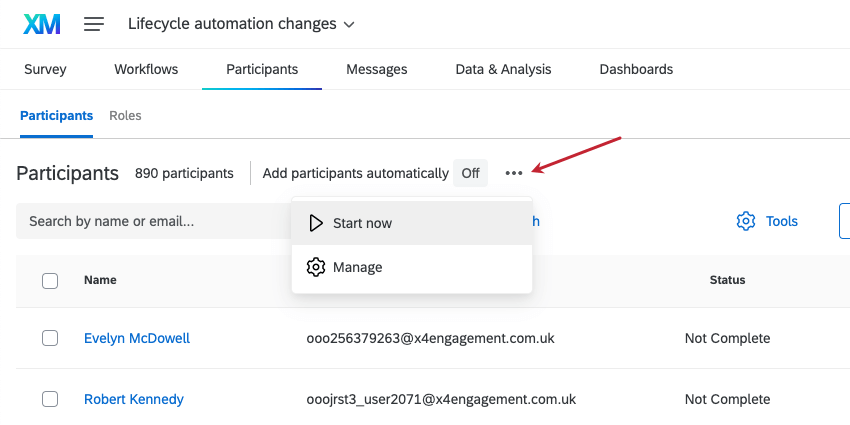Participant Import Automation
About Participant Import Automation
With Employee Lifecycle and Pulse projects, you can automatically add participants or dashboard users to the project from the Global Employee Directory on a schedule. This is helpful when you are running an ongoing program. For example, while onboarding, you can upload new employees to the directory and expect that they will be uploaded to your onboarding Lifecycle project right away.
Adding Participants Automatically on a Schedule
This option allows you to automatically add participants from the Global Employee Directory to your project on a chosen schedule. Limit the participants that are added to your project by metadata.
- Go to the Participants tab.
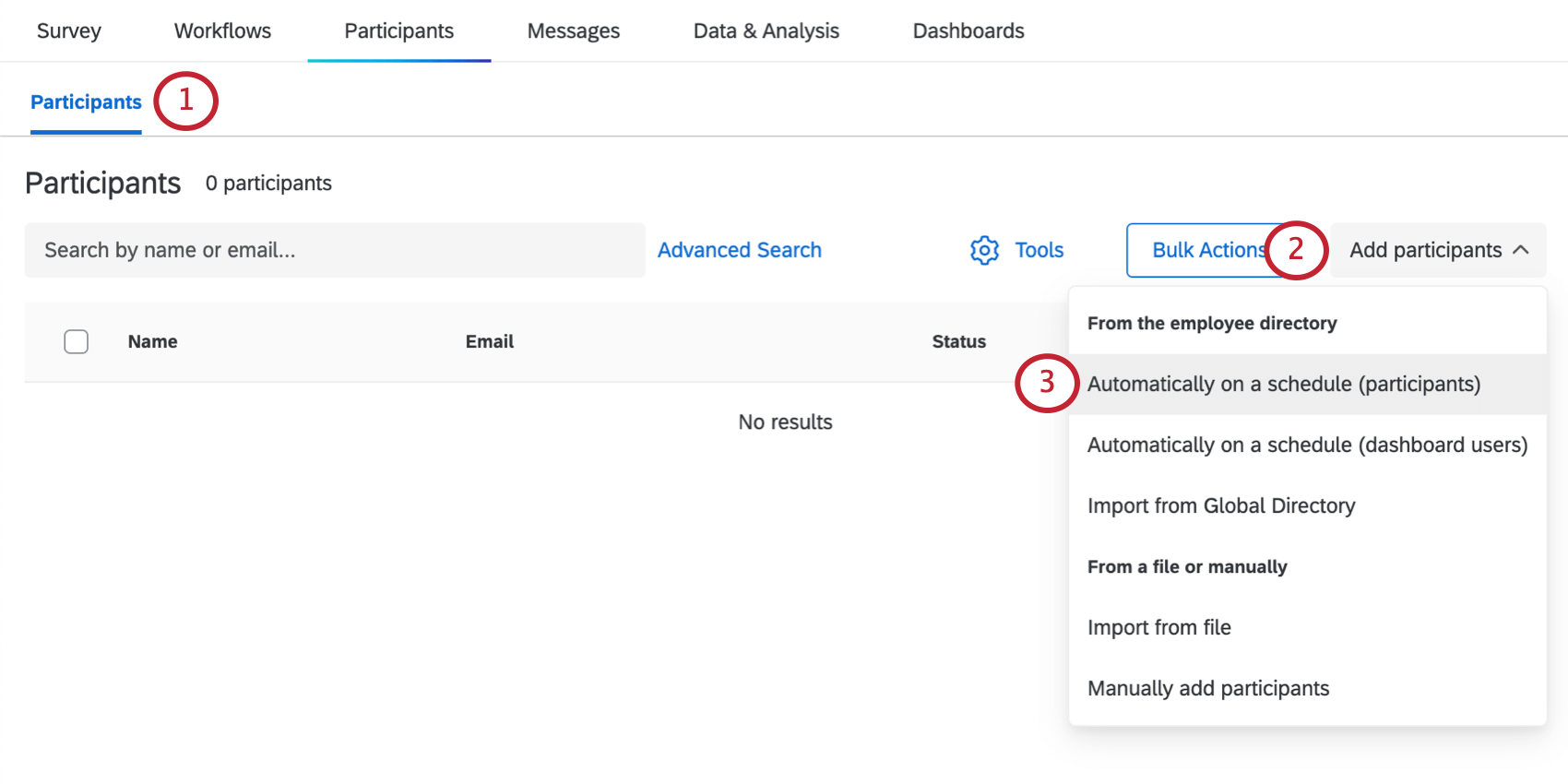
- Click Add participants.
- Select Automatically on a schedule (participants).
- If you’d like the automation to be enabled as soon as you save your changes at the end, select On. If you don’t want your automation to start yet, select Off.
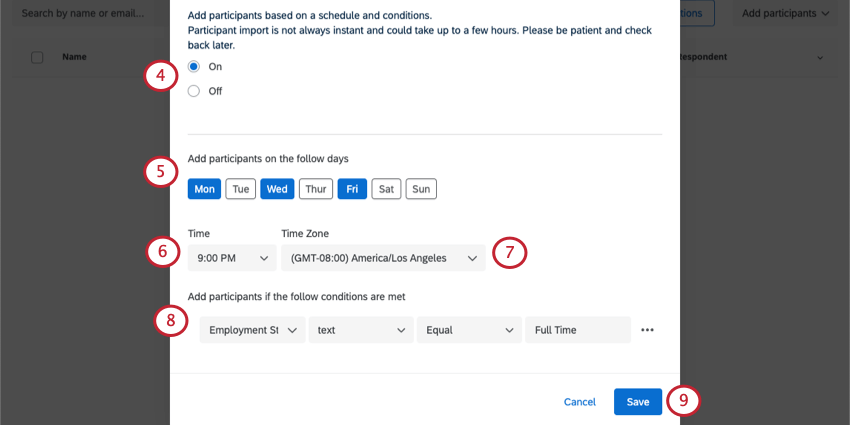
- Choose the recurring days of the week you’d like this automation to run.
- Choose the time of day you’d like the automation to run.
- Specify the time zone.
- Use the dropdown to set the conditions under which participants are added to the project. You will first select participant metadata, then define the value(s) this metadata should or should not have in order to include participants.
Qtip: You must add at least one condition.Qtip: See the Setting Participant Automation Conditions section below for more information.
- When you’re finished, click Save.
Adding Dashboard Users Automatically on a Schedule
This option lets you add dashboard users from the Global Employee Directory to your project on a chosen schedule. Dashboard users don’t participate in the Lifecycle survey. Instead, they only access the results on the dashboard.
A dashboard user automation is especially useful when it’s paired with automatic role assignment. Using both features at once allows you to give permissions to your lifecycle dashboards automatically based on changes in your organization.
- Go to your Employee Lifecycle’s Participants tab.
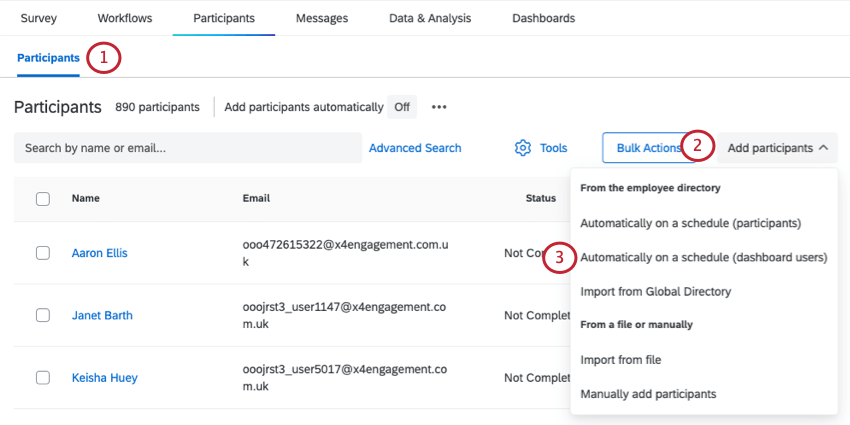
- Click Add participants.
- Select Automatically on a schedule (dashboard users).
- If you’d like the automation to be enabled as soon as you save your changes at the end, select On. If you don’t want your automation to start yet, select Off.
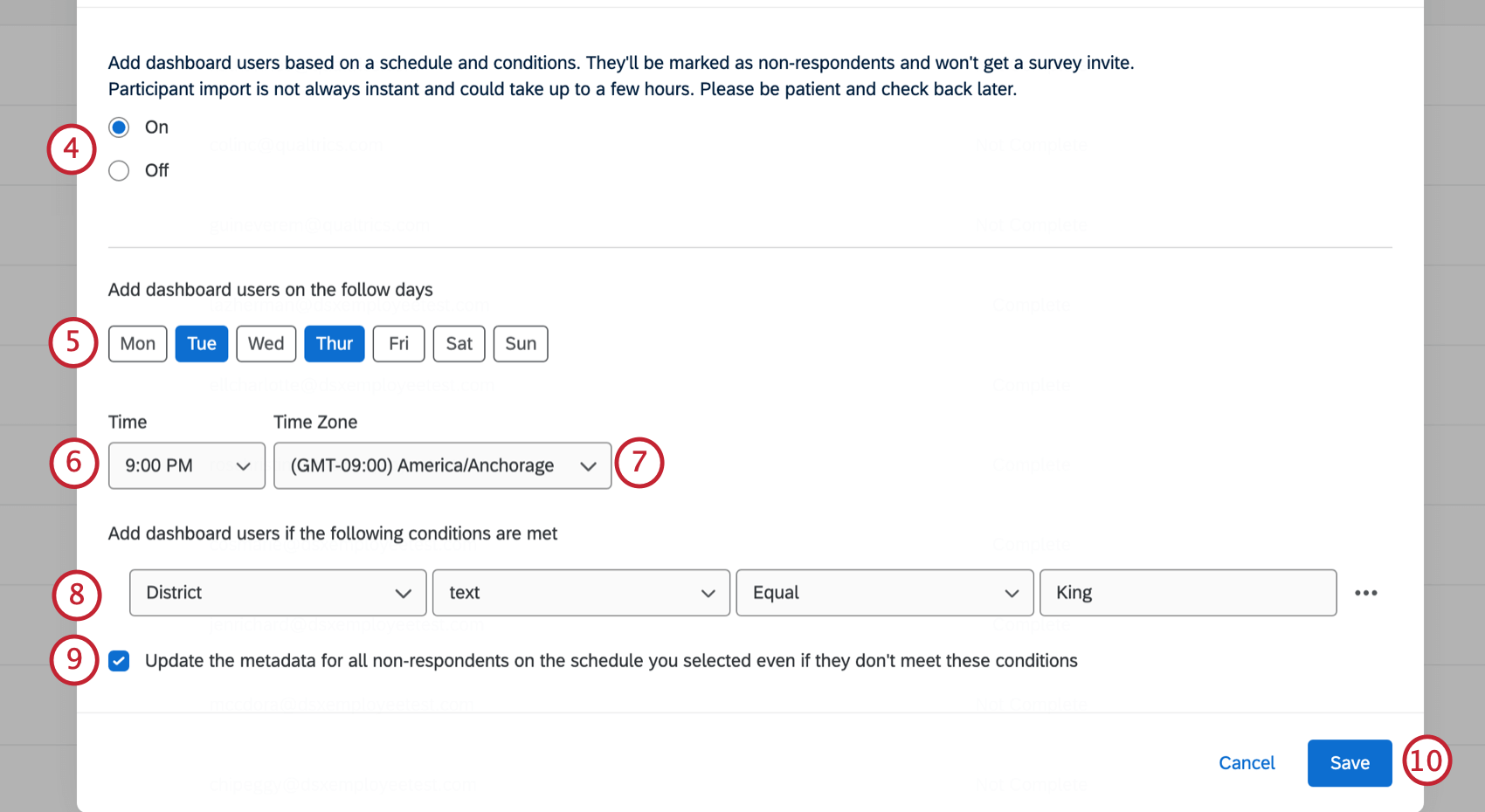
- Choose the recurring days of the week you’d like this automation to run.
- Choose the time of day you’d like the automation to run.
- Specify the time zone.
- Use the dropdown to set the conditions under which participants are added to the project. You will first select participant metadata, then define the value(s) this metadata should or should not have in order to include participants.
Qtip: You must add at least one condition.Qtip: See the Setting Participant Automation Conditions section below for more information.
- Decide whether to select Update the metadata for all non-respondents on the schedule you selected even if they don’t meet these conditions. By checking this box, the automation will automatically pull in the latest metadata from the global directory and update all non-respondent participant metadata, regardless of whether they meet the criteria or not.
Qtip: This applies both to participants who were previously imported and those who were manually added as non-respondent participants.
- When you’re finished, click Save.
Setting Participant Import Conditions
In the previous section, you set the conditions under which participants are added to the project from the directory. Depending on the field type of the metadata you use in your conditions, you can set conditions based on different operators.
You can add more than one condition participants must meet by clicking the plus sign ( + ) next to a condition. Click the minus sign ( – ) next to a condition to remove it. These conditions are evaluated cumulatively, meaning they are always joined by an implied “and.” (E.g., Condition one AND condition two must be met for a directory member to be uploaded to the participant list.) You can have up to 20 conditions for one participant automation.
Date fields
For date fields, you can choose to import people whose date metadata value falls More Than, Less Than, or Exactly X amount of days before or after today. To import participants within a specific time window, you’ll need to use 2 condition sets to “sandwich” the time frame you want to import. Here we’ll walk you through setting up those conditions.
- Enter the name of the metadata field, and choose the field format. Make sure the format is date.
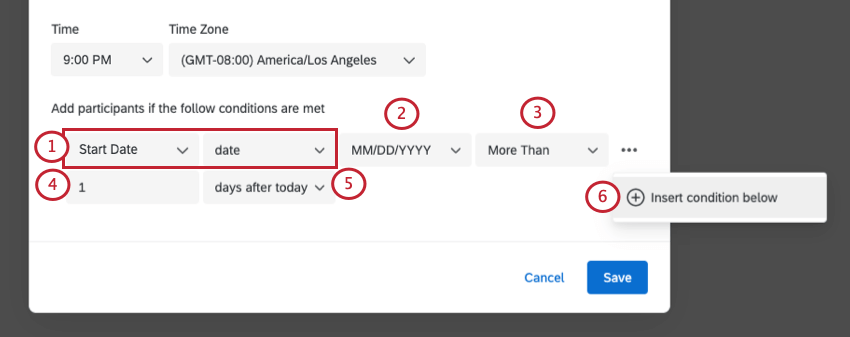
- Choose the date format. You can choose one of the following:
- MM/DD/YYYY
- MM-DD-YYYY
- DD/MM/YYYY
- DD-MM-YYYY
- YYYY-MM-DD
- YYYY/MM/DD
- Choose if the date needs to be More Than, Less Than, or Exactly the number of days specified.
- Enter the first bound of your condition.
- Choose if the condition is related to the number of days after today or days before today.
- Click the three dots and then Insert condition below to add another condition.
- Choose the same field and field format as you did for your first condition.
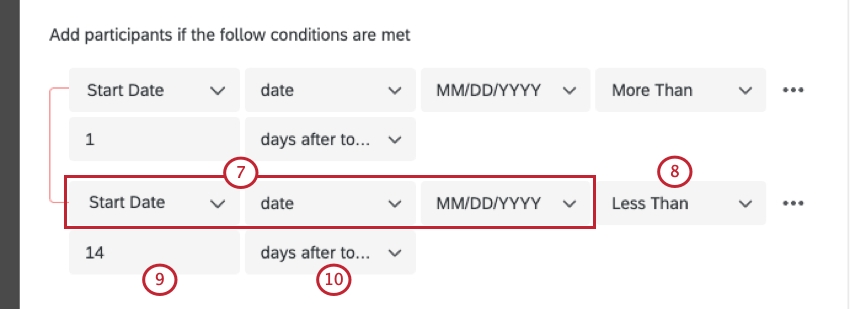
- Choose the opposite condition from the one you picked in step 3.
Example: Since we used More Than in our first condition, we’ll use Less Than for the second condition.
- Enter the second bound of your condition.
- Choose if the condition is related to the number of days after today or days before today.
Example: Let’s say you want to import all participants from your Employee Directory who started working at your company within the last two weeks (the past 0-14 days). For your automation, you will have two conditions. The first condition is to import all participants with a StartDate that is Less Than 14 days before today. This will capture employees that started 14 days ago or sooner. The second is to import all participants with a StartDate Less Than 1 day after today. This will capture employees that started today or sooner. These two conditions create the upper and lower bounds of our import conditions, meaning that only employees with a StartDate within the last two weeks will be imported.
Number fields
Choose values that are Greater than or Less than criteria.
Text fields
Choose values that are Equal to, Not Equal to, In, and Not In criteria.
“Equal to” only includes participants with an exact value match. “Not Equal to” will exclude anything with that exact text.
“In” and “Not in” can be useful when you’d like to include multiple metadata values in your criteria. Make sure these values are comma-separated, with no conjunction like “and” joining them.
Example: Let’s say you set criteria to match the “Department text in Sales, Marketing, Engineering.” If Barnaby’s Department is “Sales,” he’d be included in this automation. So would anyone with the Department “Marketing” or “Engineering.” Thus, “In” allows you to list several terms, decreasing the number of conditions you have to add.
Managing Existing Participant Automations
Existing participant automations will be listed at the top of the Participants section of the Participants tab. Here, you can see whether the automation is currently on or off. You can also click the menu next to the automation in order to choose from a couple options.
- Start now: Run the automation.
- Manage: Edit the automation. This lets you turn the automation on or off, edit the conditions, and change the timeframe.
